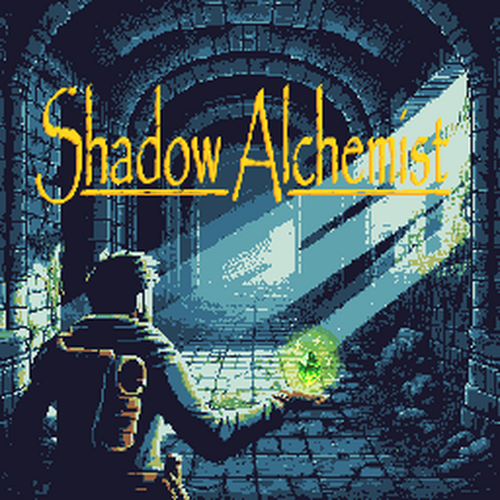#1 Making the Prototype

Reflection on my first game jam project for Pirate Software Game Jam 15
Initial Concept and Evolution
The jam theme was shadows and alchemy and our concept evolved through several iterations:
-
First concept: A novice alchemist learns to control shadows, using this ability to avoid enemies and solve puzzles. However, I realized the game mechanics and controls would be challenging to implement.
-
Second Concept: A novice alchemist who is vulnerable to light and must stay in shadows to survive. This idea progressed to the pre-prototype stage but was discarded due to concerns about limiting map design and creating an overly dark atmosphere.
-
Final Concept: A novice alchemist who learns to unlock the secrets of self-transmutation. Using alchemical powers, the character evades enemies, overcomes obstacles, and solves puzzles to delve deeper into the dungeon to find its true purpose.
Technical Challenges and Solutions
As my second game development project (following a side-scrolling shooter), I aimed to implement several advanced features:
-
Transparent Walls: To expand the practical playing area and increase tension during map exploration.
-
Fog of War: For lag of a better name for a limited vision for the player. This is also to increase tension but discarded due to time constraints and implementation difficulties.
The scope was ambitious, especially considering my eight months of game development experience. I experimented with various techniques, including raycasts but ended up using simple area detection zones for the transparent walls.
Map Design
My brother designed and built the map while I focused on core game systems. The entire map was drawn on a single tilemap, which proved problematic for transparent walls and dynamically adjusting object layers.
In retrospect, building individual, self-contained rooms that could be easily copied and modified would have been more efficient.
Skill Implementation Challenges
The most challenging skill to implement was the player duplication ability. This feature repeatedly broke other game systems due to the complexity of managing multiple player instances in the game world.
Time Management and Final Push
With just three days left before the jam deadline, several critical elements were still missing:
-
No puzzles implemented
-
Lack of dialogue
-
Numerous map issues
The final three days were intense, but I was determined to submit my prototype. On the last day, I was still fixing issues and implementing dialogue. Unfortunately, this last-minute rush led to partially breaking the dynamic object layer system, which I only noticed after the submission deadline.
Notes to self and how to improve the game
-
Scope Management: Better align project ambitions with available time and experience level.
-
Testing and polish: Allocate more time for thorough testing and polish. (Consequential effect of scope management)
-
Modular Design: Implement a more modular approach to level design for easier modification and troubleshooting.
Despite the challenges, this game jam was an invaluable learning experience. It pushed me to do and test things I probably wouldn’t otherwise. For possible future jams, I’ll focus on creating a more streamlined development process and setting realistic goals within the time constraints.
Leave a comment
Log in with itch.io to leave a comment.